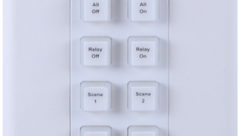How Amazon Has Changed Your Connected Home
Apr 21, 2014 10:57 AM,
By Jason Bovberg
Yes, I’ve done it. I’m guilty of it: I’ve browsed my local Best Buy store and have used my smartphone to check prices of same items at Amazon. I’ve done this repeatedly. I’m not saying I’m a saint or that I’m guiltless, but I’m not proud of it. I just can’t help it. Apparently you can’t help it either.
In an age when online shopping is gaining a gargantuan upwind thanks to the rise of the smartphone/tablet device, how can the old brick-and-mortar stores compete? Particularly when Amazon promises—and actively monitors competitors’ prices—to undercut or match the price tags at any physical store, particularly when many other odds are stacked in favor of the online store. The answer is: They can’t. Physical stores of all stripes are settling into downward spirals, filing for bankruptcy, shuttering, and dying slow deaths.
Consumer electronics superstores such as Circuit City and Ultimate Electronics were among the early casualties, signaling a sea change in how electronics and AV media were distributed and sold. Best Buy is seriously hurting. Borders Bookstores died an untimely death, and Barnes & Noble is foundering, fundamentally altering the book industry. Moving away from media and entertainment, sea changes are settling over other industries, too—from stores as renowned as Sears, Target, Kmart, Office Depot, and Staples—as Amazon’s Jeff Bezos has made it clear that Amazon wants to sell everything. Everything!
I use my Amazon account to maintain a pages-long shopping cart full of potential preorders, current items I’m thinking of purchasing, and wish-list items for friends and family. I keep items in that cart and watch the rise and fall of their price points, which fluctuate according to seller whim and competitor impulse. I jump at low prices when they happen to buzz at me on my phone. For years, Amazon has been willing to operate near the break-even point and even at a loss in order to secure this future, this common consumer behavior. And now the company is poised to take over the planet.
There’s no doubt Amazon has changed the way you shop for the items you keep in your connected home. From physical books and ebooks, to DVDs and Blu-rays, to toys and games, to foods and medicines and supplements, to clothing and sports gear, to household items and landscaping materials, the sky is literally the limit (if Amazon’s April Fool’s Day drone prank would be believed). Be honest: You have used your smartphone to compare prices at a local store with those at Amazon—perhaps you’ve even used an integrated scanner app on your phone/phablet that automatically brings up online prices, with Amazon conveniently (or merely by nature of its always-the-best pricing) positioned at the top of the list. Perhaps you’ve even made an Amazon purchase while standing inside the competing physical store!
Do you feel guilty when you do that? I’m beginning to.
Because some truths about the Amazon business model are becoming increasingly clear. Would you be so apt to comparison-shop in favor of Amazon if you knew about the dangerous and grueling working conditions at its warehouses? How about if you gave more thought to the huge advantage Amazon holds with its sales-tax-exempt status? Yes, as a consumer, you benefit to the tune of 5 to 10 percent with every Amazon sale, but brick-and-mortar stores, again, are stuck at a starting point that’s already a few steps behind. What if you knew that Amazon pressures its suppliers to provide certain discount levels, and when they don’t, Amazon makes it harder for you to buy items from those suppliers? Combine these practices with the aforementioned conditioning of consumers to use their smartphones to comparison-shop and Amazon’s years-long patience, selling items at a loss, and you have a sinister monopoly occurring in plain sight. Amazon offers the best prices—sure—but at what ultimate cost?
The lure of the lowest price and the sheer ease of the one-click purchase are so strong that perhaps you still don’t care. It’s the new retail reality of the 21st century—an era when nobody will need to ever leave the house. Today, vendors need to come to you. They need to bend over backward to come to you. Otherwise, they have no chance.
How do these realities change the way you build, wire, and accessorize your connected home? Are we facing a near future in which in-person browsing—of actually holding or getting a tactile sensation of a given item—is doomed? How about testing the heft, feel, and performance of a new laptop? What about listening to loudspeakers, savoring their build, before you purchase? Or comparing the images on LCD monitors? Playing around with a digital camera? Trying on clothes? Judging the color of fabrics? Running your fingers over the surfaces of non-stick cookware?
Sometimes I feel that the rise of a marketplace like Amazon was inevitable. That another company or cabal of companies would have stepped into the market opportunity in Amazon’s absence. Because it has been an opportunity borne by market realities—an opportunity to define the new consumer experience. And maybe that experience was always destined to be one of cut-throat price gouging and uber-convenience at the expense of all else, to cater to the at-home customer, to forcibly alter the shopping landscape from one of raised-eyebrows perusing of shelves and aisles to one of Buy It Now carelessness.
I know at my home, we very rarely travel to our local malls or stores to shop—at least compared with how often we used to do that—and when we do find ourselves in a store, we’re less apt to buy anything. The item really has to be unique. In fact, last weekend, we found an item that seemed a bit high in price, so we immediately turned to our smartphones and attempted to compare prices online. The only reason we walked out of that shop having purchased this item was because we couldn’t find it online. What an unfortunate state of affairs!
How do you feel about this revolution in the way we shop for our homes? Do you care more about your bottom line than the bottom lines of the brick-and-mortar stores that once defined consumerism in America? Do you mind that the world is centralizing at the expense of a lot you held dear? Think about it next time you need to buy a piece of equipment or media.










